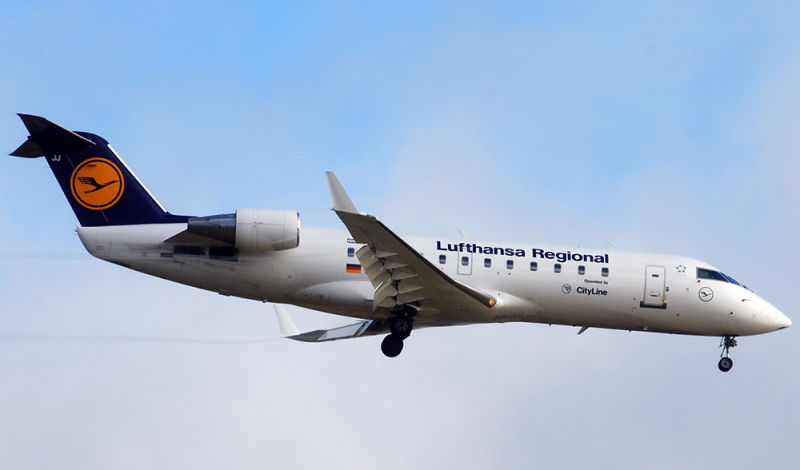Welcome to This Date in Aviation History, getting of you caught up on milestones, important historical events and people in aviation from May 8 through May 10.
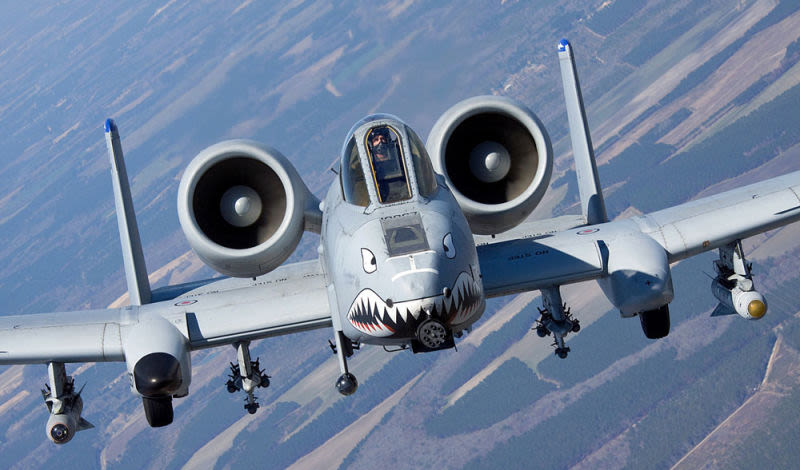
May 10, 1972 – The first flight of the Fairchild Republic A-10 Thunderbolt II. On the night of August 20, 1968, half a million Warsaw Pact soldiers and thousands of tanks and armored vehicles rolled into Czechoslovakia and took control of the country in a single night, putting an end to the political reforms of the era known as the Prague Spring. That watershed event in the Cold War demonstrated to the West that the massed might of Soviet armor was a serious and perhaps imminent threat, one that land power alone was not prepared to counter. It would take a combination of land and air power to stop the hordes of Soviets tanks that might invade Western Europe but, at that time, NATO had no dedicated, tank-busting aircraft in its inventory.
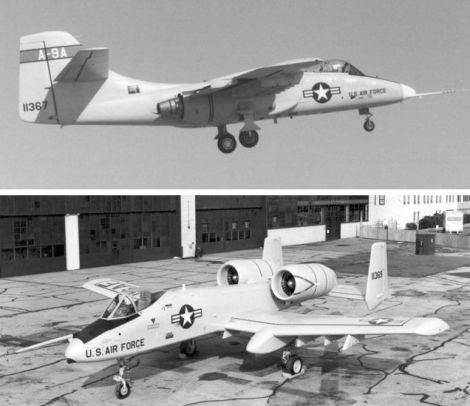
For ideas on how such an aircraft might look, designers found ample inspiration from the Second World War. One of the first tank busters, the Hawker Hurricane Mk IID, was a regular fighter armed with a pair of 40mm cannons which proved devastatingly effective against German tanks. For their part, the Germans developed the heavily armed though not very maneuverable Henschel Hs 129, the first aircraft specifically designed for close air support. But the move to jet fighters after the war saw the rise of multi-role fighters, ones that could both intercept enemy aircraft and attack ground targets. However, these aircraft were somewhat of a compromise, and not necessarily the best solution for one scenario or the other. By the Vietnam War, the only dedicated close air support (CAS) aircraft in the Air Force was the Douglas A-1 Skyraider, an remarkably capable aircraft, but one that traces its origins to the Second World War. The NATO allies realized that they needed a purpose-built CAS aircraft, one that could fly low and slow over the battlefield, be rugged enough to sustain battle damage and bring its pilot home alive, and have sufficient firepower to knock out a tank in a single pass.
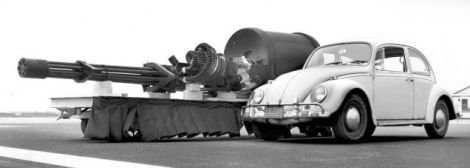
In 1966, the US Air Force created the Attack Experimental (A-X) program office to find a suitable aircraft and by 1970 a specific request for proposals was made to the defense industry. Though the new CAS aircraft would be jet-powered, the emphasis was on accuracy and firepower, not speed. It would have a maximum speed of only 460 mph, but it would also be capable of carrying 16,000 pounds of external stores (by comparison, a loaded Boeing B-29 Superfortress carried 20,000 pounds of bombs). Most importantly, the new aircraft would be developed around the massive General Electric GAU-8 Avenger 30mm cannon, a seven-barrel Gatling gun that could fire over 4,000 rounds of depleted uranium bullets per minute. Compared to other guns in use in CAS aircraft at the time, the Avenger had twice the range, took half the time to reach the target and could deliver three times the mass of projectiles to the target.

The Air Force selected two finalists, the Northrop YA-9 and the Fairchild Republic YA-10. The YA-9 was a relatively traditional aircraft with fuselage-mounted engines and a shoulder wing, roughly comparable to the Russian Sukhoi Su-25. The YA-10, however, was a radical departure from traditional design, with a low, straight wing that provided excellent low-speed maneuverability, engines mounted in pods above the fuselage to protect them from ground fire, and twin tail fins for redundancy. Twelve hundred pounds of titanium armor formed a tub that protected the pilot and fragile avionics. The massive cannon was mounted slightly off-center so that the firing barrel was directly on the aircraft’s centerline. Otherwise, the gun’s recoil would force the nose of the aircraft off the target. The gun’s position beneath the cockpit also helped prevent the ingestion of gun gases into the engines.
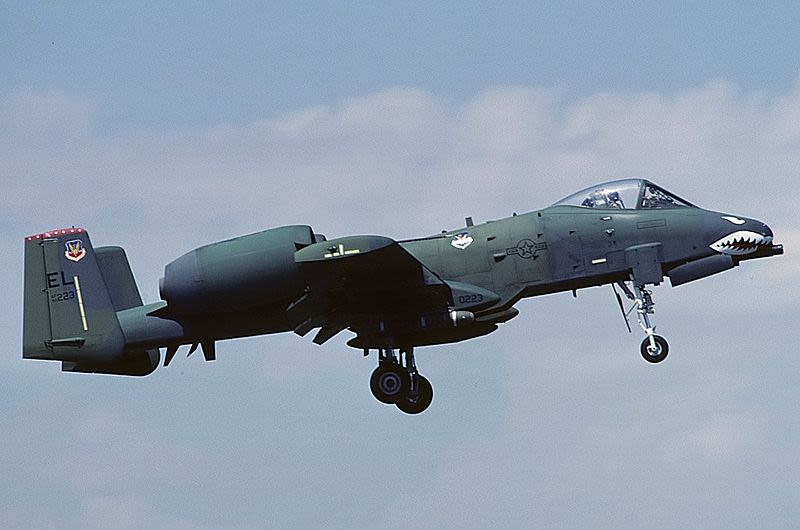
Following a fly-off between the two competing designs, the Air Force selected the YA-10 as the winner in April 1973 and took delivery of the first production A-10s in March 1976. At first, some Air Force pilots balked at the idea of flying low and slow over the battlefield, accustomed as they were to dogfights at high altitude. But in the Gulf War of 1990-1991, the Thunderbolt II, more commonly referred to as the Warthog, showed how it was truly worthy of its WWII P-47 Thunderbolt namesake. During the war, A-10s destroyed more than 900 Iraqi tanks, 2,000 military vehicles, and 1,200 artillery pieces. A-10 pilots even shot down two enemy helicopters. The Thunderbolt II maintained a stellar 95.7 percent mission-capability rate over 8,100 sorties. The Air Force was so impressed that they dropped any ideas of replacing the twenty-year-old aircraft at the time. However, that love affair is on the rocks, as Congress and the Air Force decide how best to allocate limited funds. Despite continued excellent service in the low-intensity conflicts in Iraq, Afghanistan, and Syria, and with no true dedicated successor, the Air Force made plans to retire the A-10 to free up money for production of the Lockheed Martin F-35 Lightning II, a multi-role stealth aircraft that has yet to prove that it can live up to its WWII Lockheed P-38 Lightning heritage, or effectively perform the CAS role that is so brilliantly carried out by the A-10. In 2017, the US Congress stepped in and appropriated the money to keep the A-10 flying, and the 2019 budget includes money to replace the wings on existing Warthogs. At least the for near future, the A-10 will continue to fly.
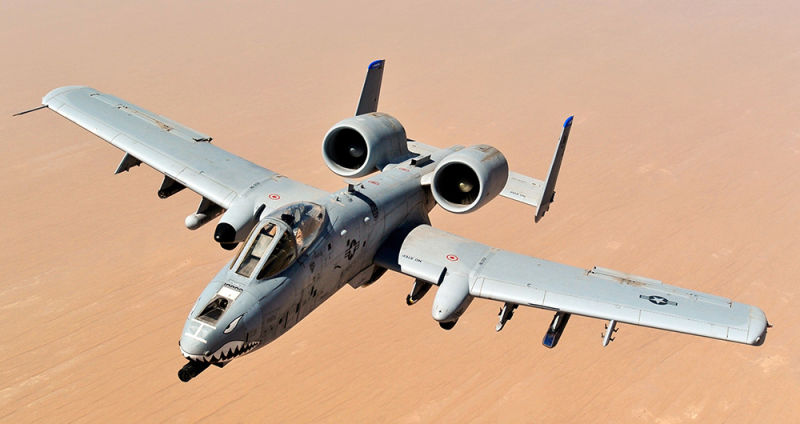
Short Takeoff
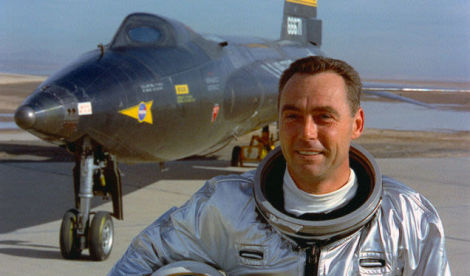
May 8, 2004 – The death of William J. “Pete” Knight. Knight was born in Noblesville, Indiana on November 18, 1929, and joined the US Air Force in 1951. He served as a test pilot at Edwards Air Force Base flying the F-100 Super Sabre, F-101 Voodoo, F-104 Starfighter, T-38 Talon and F-5 Freedom Fighter. Following the cancelation of the Boeing X-20 Dyna-Soar project, Knight was selected to fly the hypersonic North American X-15. On October 3, 1967, Knight piloted the X-15 to a speed of Mach 6.72 (4,520 mph), setting an absolute speed record for manned flight that still stands. He was also one of five pilots to earn astronaut wings when he reached an altitude of 280,550 feet while flying the X-1. After his stint as a test pilot, Knight flew 253 combat missions during the Vietnam War, and retired from the Air Force in 1982 before serving as a California state politician.
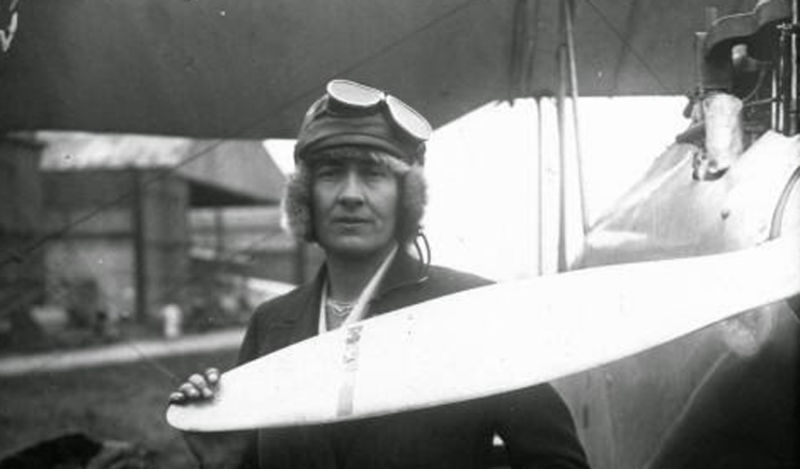
May 9, 1939 – The death of Lady Mary Heath, an Olympic athlete, pilot, and the first woman to hold a commercial pilot license in Britain. Born on November 1896 in Knockaderry, County Limerick, Heath set numerous records for altitude and distance, and found fame with a highly publicized flight from Cape Town, South Africa to London in an open cockpit biplane, the first pilot—male or female—to do so. She was also the first woman to parachute from an airplane, and flew as a volunteer copilot with Dutch airline KLM, hoping to become the first woman airline pilot. Known in the United States as “Britain’s Lady Lindy” after famed American aviator Charles Lindbergh, Lady Heath traveled extensively in the US on the lecture circuit, but an injury she suffered in a crash leading up to the Cleveland Air Races in 1929 curtailed her flying exploits. Lady Heath returned to Ireleand to run her own aviation company, but died from injuries sustained in a fall from the upper deck of a double-decker tram.
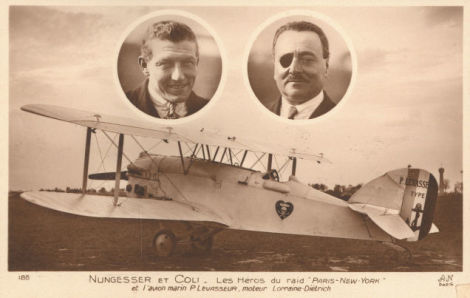
May 8, 1927 – Former WWI fighter ace and aviation pioneer Charles Nungesser disappears over the Atlantic Ocean. Nungesser was born in Paris on March 15, 1892 and worked as a mechanic and race car driver before becoming interested in aviation. As a fighter pilot, Nungesser claimed 42 victories during WWI, making him the third-highest scoring French ace of the war. Following the war, Nungesser went to the US to work as a pilot in the film industry, and became interested in the idea of a transatlantic flight. Teamed with navigator Françcois Coli, the pair took off from Le Bourget Airport near Paris on May 8, 1927 in a Levasseur PL.8 biplane emblazoned with Nungesser’s famous skull and crossbones insignia from the war. After passing Ireland, Nungesser and Coli were never seen again, and no wreckage was ever recovered. Just two weeks later, Charles Lindbergh successfully crossed the Atlantic alone.
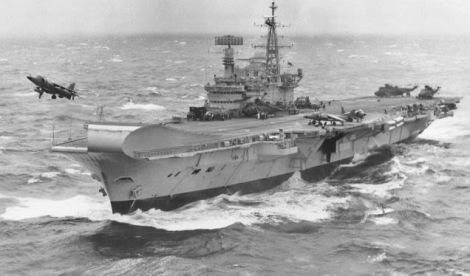
May 9, 1981 – HMS Hermes enters service as the first aircraft carrier to employ a “ski jump” deck. Hermes was laid down on June 21, 1944 as the last of the Centaur class of aircraft carriers, and was completed in 1957. After service as a standard aircraft carrier, Hermes had its catapults and arresting gear removed for conversion to a “Commando Carrier.” As part of the conversion, a 12-degree ski jump was added to aid the launch of the STOVL British Aerospace Sea Harrier. Hermes served as the British flagship during the Falklands War in 1982, where her fighters and helicopters supported the British forces in the recapture of the disputed islands. After decommissioning in 1984, Hermes was sold to India, recommissioned as the INS Viraat, and served until 2016.

May 9, 1967 – The first flight of the Fokker F28 Fellowship, a short range jet airliner developed by the Dutch aircraft manufacturer Fokker. Initially designed to accommodate 50 passengers, production aircraft eventually carried 65 passengers, and future variants were expanded to carry as many as 79 passengers. Similar in appearance to the Douglas DC-9, the Fellowship was powered by a pair of Rolls-Royce Spey low-bypass turbofans that gave the F28 a cruising speed of about 520 mph and a range of up to 1,200 miles, depending on the variant. A total of 241 aircraft were produced from 1967-1987, and the type remains in very limited service.
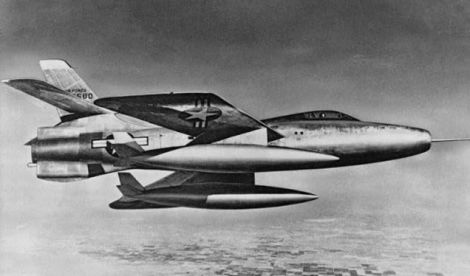
May 9, 1949 – The first flight of the Republic XF-91 Thunderceptor. Sticking with the “thunder” in their aircraft nicknames, Republic Aviation designed the Thunderceptor as a mixed propulsion interceptor that was powered by a jet engine for most of its flight but augmented by rocket power for added speed and climb during interception. The Thunderceptor was notable for its use of an inverse tapered wing that was intended to help with the problem of pitch-up during transonic flight. Due to the rapid advances in jet engine technology, the Thunderceptor was never adopted. Only two were built, though it does own the distinction of being the first US fighter to exceed Mach 1 in level flight.
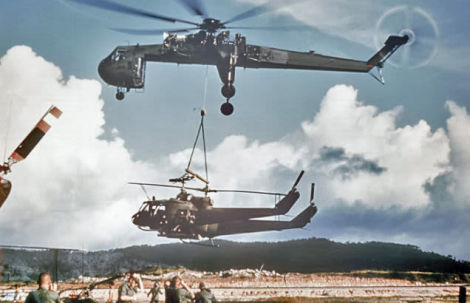
May 9, 1962 – The first flight of the Sikorsky CH-54 Tarhe (S-64 Skycrane), a heavy-lift helicopter that traces its lineage back to the Sikorsky S-56 (military CH-37 Mojave), an early heavy lifter which was then developed into the Sikorsky S-60 which served as the basis for the CH-54. The Tarhe could lift up to 20,000 pounds either in a detachable pod or slung beneath the fuselage, and the three-person cockpit crew had one pilot sitting in a rear-facing seat to control the helicopter during loading operations. Just over 100 Tarhes were built and they saw extensive service in the Vietnam War. Though the military retired the type in 1991, many are still used by private firms for heavy-lift operations and aerial firefighting.
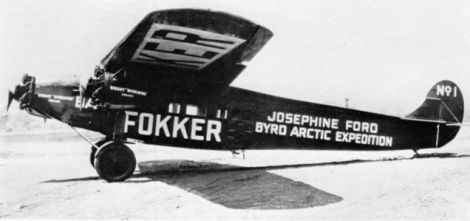
May 9, 1926 – Richard Byrd and Floyd Bennett make the first flight over the North Pole. While some historians credit Byrd and Bennett with this milestone in aviation exploration, there remains significant controversy surrounding their accomplishment. With Bennett as pilot, Byrd planned to take off from Spitsbergen (Svalbard), Norway in their Fokker F.VIIa-3m, fly over the Pole, and return. However, evidence of erasures in Byrd’s personal diary cast doubt on whether the team actually reached the Pole before returning to Spitsbergen. Nevertheless, Byrd and Bennett were hailed as national heroes and awarded the Congressional Medal of Honor. Three days later, a flight by the airship Norge, lead by Roald Amundsen, flew from Spitsbergen to Alaska, leaving no doubt that they crossed the Pole. The debate continues as to which explorer was actually first.
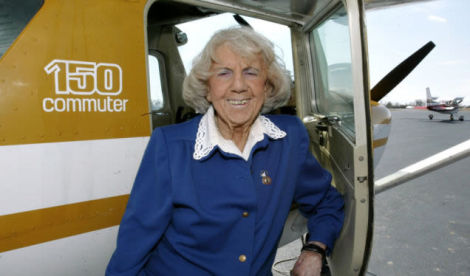
May 10, 2012 – The death of Evelyn Bryan Johnson. Johnson was born in Corbin, Kentucky on November 4, 1909 and began her flying career with the US Army Air Corps in 1944. By the time she quit flying at the age of 96 she had logged 57,635 flying hours, the international record for the greatest number of flying hours logged. Johnson served as a colonel in the Civil Air Patrol and as a flight instructor, garnering the distinction of being the oldest instructor pilot in the world and training more pilots and giving more FAA exams than any other instructor. On July 21, 2007, Johnson was inducted into the National Aviation Hall of Fame, joining Amelia Earhart, Jacqueline Cochran, Sally Ride and other famous flyers.
May 10, 1991 – The first flight of the Bombardier CRJ100. The CRJ traces it roots back to 1989 with the beginning of the Canadair Regional Jet program which sought to develop a medium-range jet airliner to seat up to 52 passengers. The design was originally developed as a stretched variant of the Canadair Challenger CL-600 business jet and, following the CRJ100's entry into service, it was quickly developed into the CRJ200 ER and LR, each with increased range. The CRJ100, along with its larger CRJ200 variant, have proven very popular with smaller airlines, as well as some large airlines who use the regional jet to serve smaller airports. A total of 935 aircraft of both variants have been produced, and the airliner remains in service.
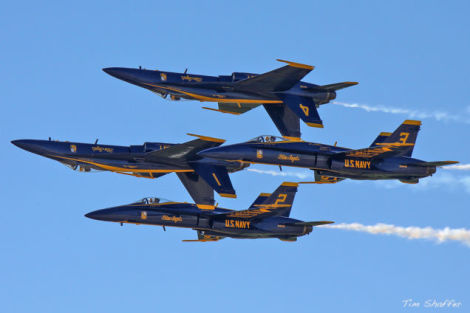
May 10, 1986 – The U. S. Navy selects the McDonnell Douglas F/A-18 Hornet as the official airplane of the Blue Angels. The Blue Angels were founded in 1931, and one of the hallmarks of the flight demonstration squadron has always been that they fly the same combat aircraft currently in fleet service. The Blues began with the Grumman F6F Hellcat and F8F Bearcat following WWII, then transitioned to jets in 1949 flying the Grumman F9F Panther. Staying with Grumman, the Blues transitioned to the swept wing F-9 Cougar and then F-11 Tiger before adopting the McDonnell Douglas F-4 Phantom II in 1969. Next came the more economical Douglas A-4 Skyhawk, and finally the Blue Angels’ first fourth generation fighter with the F/A-18 Hornet. The Blues are scheduled to transition to the Boeing F/A-18E/F Super Hornet by the end of 2021.
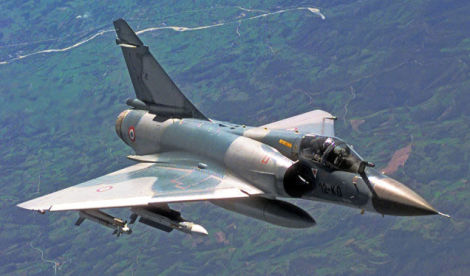
May 10, 1978 – The first flight of the Dassault Mirage 2000. Based on the delta wing Mirage III, the Mirage 2000 was developed in the 1970s as a lightweight fighter to compete with the General Dynamics F-16 Fighting Falcon for the export market. Since the Mirage 2000 was based on an existing aircraft, the prototype was ready for its first flight in just 27 months. It displayed superb handling for a delta-wing aircraft, impressing spectators when it was unveiled at the 1978 Farnborough Airshow and demonstrating that it was indeed a viable competitor to its American challenger. The Mirage 2000 entered service in November 1982, and over 600 examples were produced.
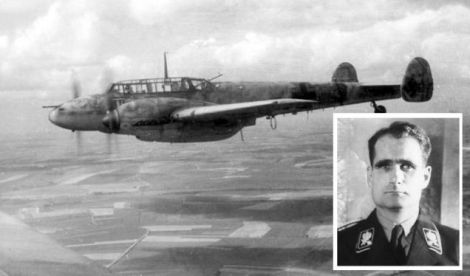
May 10, 1941 – Rudolf Hess parachutes into Scotland. Hess served as an infantryman and pilot in WWI, then rose to power with Adolf Hitler in the 1930s, eventually being named Deputy Führer in 1933. After the outbreak of WWII, Hess feared that Germany faced a ruinous war on two fronts, and he took it upon himself to broker peace with Great Britain. Taking off from Germany in a Messerschmitt Bf 110, Hess flew to Scotland and hoped to make contact with Douglas Douglas-Hamilton, 14th Duke of Hamilton, whom Hess mistakenly believed was opposed to the war in Europe. Chased by RAF fighters, Hess bailed out and was captured. He spent the remainder of the war as a British captive, never having met British Prime Minister Winston Churchill. Though he was tried at Nuremberg after the war, Hess was not found guilty of war crimes; however, he spent the rest of his life in Spandau Prison, and died there in 1987 at the age of 93. The wreckage of his plane now resides in the Imperial War Museum.
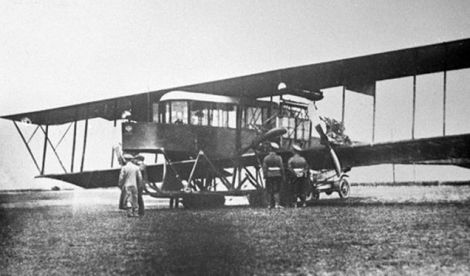
May 10, 1913 – The first flight of the Sikorsky Russky Vityaz. While Igor Sikorsky is best known in the West for his pioneering work with helicopters, he first made a name for himself in Russia with the construction of large civilian and military aircraft before emigrating to the US in 1919. The Russky Vityaz was powered by four Argus As I four-cylinder engines and had a top speed of 56 mph. It could carry up to seven passengers, and the fuselage was large enough that the passengers were able to move about the cabin during flight. Despite the promise of the Russky Vityaz, the sole aircraft was severely damaged when the engine of another airplane fell on it and crushed it. Rather than repair the aircraft, Sikorsky moved on to develop the even larger Ilya Muromets.
Connecting Flights
If you enjoy these Aviation History posts, please let me know in the comments. And if you missed any of the past articles, you can find them all at Planelopnik History. You can also find more stories about aviation, aviators and airplane oddities at Wingspan.
